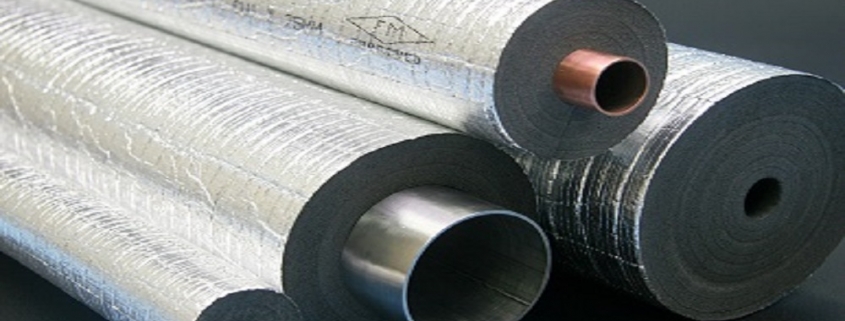The Burgeoning Demand in the HVAC Insulation Market
The HVAC insulation market is projected to grow at a CAGR of 5.82% during the forecast period to reach a value of US$7.713 billion by 2027, from US$5.192 billion in 2020.
Introduction
HVAC insulation includes ventilation, heating, and air conditioning systems. The purpose of this insulation is to enhance a building’s sound insulation, safety measures, and power efficiency. The insulation in this system prevents the transfer of heat. The airflow in the ductwork is supposed to be maintained at a proper temperature level, which makes duct insulation critical in the HVAC system. HVAC insulation systems are used in the commercial, housing, and industrial sectors.
Innovations in HVAC systems to augment market growth
HVAC insulation systems have witnessed significant technological developments, which have led to considerable savings in energy and better functioning equipment. These innovations in technology aid in accelerating the demand for HVAC systems, and thus surge the demand for the HVAC insulation market. Optimized Thermal Systems in Maryland has been working on an innovative heat exchanger that is expected to mitigate refrigerant leakage by 90% when compared to the present ones. This technology would allow the refrigerant to stay where it should, which would further help in keeping houses cool and the expenditures of energy low, owing to the fewer joints. Further, the University of Florida has been working on a prototype that combines a dehumidifier, water heater, and air cooling unit together to improve heat transfer efficiency. This method would help improve the in-house dehumidification management, leading to enhanced comfort and significant energy savings. Furthermore, Dais Analytics in Florida has collaborated with Oak Ridge National Laboratory (ORNL), to create a novel membrane-based roof-mounted air conditioning unit that would use water as a refrigerant. This technology would be suitable for hot, humid summer evenings, and is also expected to save 30% – 50% electricity when compared to the current rooftop units.
Installation Costs to act as a restraint toward market growth
HVAC systems provide heating and cooling to various places like airports, hotels, houses, and industries, among others. However, the initial cost of installation for an HVAC system is extremely high. Furthermore, these systems are susceptible to breakdowns and need regular maintenance. An HVAC system might fail due to high extremes of outside temperatures, thus requiring costly repairs. Approximately, over half of the air conditioning and heat pump systems installed currently increase the consumers’ utility costs by almost 30%. According to the National Institute of Standards and Technology, the causes for this are insufficient installation and malfunctioning equipment. The Office for Energy Efficiency and Renewable energy further states that about 3 million heating and cooling units are replaced annually, and almost US$14 billion is spent on their maintenance and repairs.
Adding to that, the HVAC industry is unregulated. Contractors do not need any licensing for them to install or repair an HVAC system which makes the industry unreliable. These factors thus hamper the growth of the HVAC insulation market and are likely to cause a decline in demand in the analysed period.
Geographical insights
The Asia Pacific region is projected to have the largest market share, owing to the rapid developments in the construction sector and is predicted to continue leading the market in the forecasted period. A huge rise in the number of commercial buildings in emerging economies of this region serves to provide lucrative opportunities to the HVAC insulation market. Novel commercial establishments such as multiplexes, shopping complexes, office buildings, and academic institutions that have surged in the developing economies in recent times are insulated using this HVAC insulation to maintain optimum indoor temperatures. Such indoor environments prevent noise transmission which is required for a disturbance-free work environment and is thus expected to augment substantial growth in the region.
North America and Europe are other established regions in the HVAC insulation market. Extreme cold and sub-zero temperatures in various countries of these regions necessitate buildings to be insulated to maintain favourable indoor environments. The UK is expected to witness significant growth in the analysed period. According to the Climate Change Act 2008, the country is aiming to reduce greenhouse gases by 80% at the least by 2050. Since the gas infrastructure of the UK does not have any suitable replacement, it would need the development of clean and carbon-free alternatives, like hydrogen or biogas. The United Kingdom has thus started to invest heavily in low-carbon heating options to alleviate the emissions from heating. One such heating option is the low-carbon heat pump, as it is regarded as an efficient and effective option to tackle the growing climate change problem. Heat pumps are a type of HVAC equipment that help in the provision of both heating and cooling in an infrastructure. The UK government has announced its aim to install about 600,000 heat pumps by the year 2028, which is expected to drive up the demand for the HVAC insulation market.
COVID-19 Insights
The COVID-19 pandemic led to a slowdown in overall market sales. Most of the construction industries were shut down indefinitely, owing to the stringent lockdowns mandated by various countries. The HVAC insulation market went through massive losses during this time. However, as the countries have started to ease these regulations, the market has started to gain traction again. The HVAC insulation market has witnessed a significant increase in demand in 2020 and 2021. With most industries getting back to their normal functioning, the HVAC insulation market is projected to rise.



